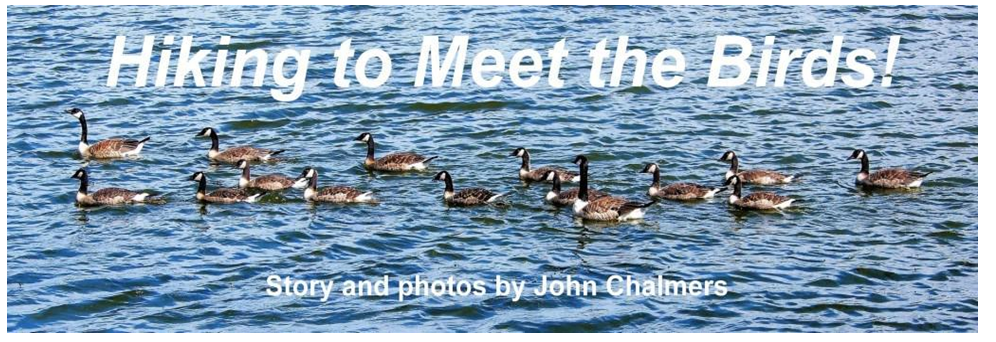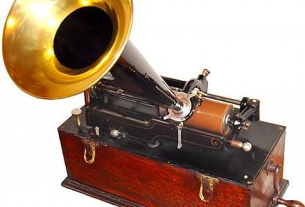By John Chalmers on the August 2020 Edition
Canadian and American “snowbirds” are not the only migrants who escape winter by spending it in Mexican sunshine and then returning home when spring comes! On my regular hikes in the Manzanillo area, some of my fine feathered friends that I photograph are also at home much further north in Canada and the United States.
 One of the great joys of leaving cold weather and snow behind to migrate to our condo at Vida del Mar near Manzanillo is to take regular hikes to photograph birds at the beaches and la-goons in the area. Whether in long group hikes or just a walk around the property, a camera goes with me.
One of the great joys of leaving cold weather and snow behind to migrate to our condo at Vida del Mar near Manzanillo is to take regular hikes to photograph birds at the beaches and la-goons in the area. Whether in long group hikes or just a walk around the property, a camera goes with me.
Hiking back at home and enjoying the birds in an urban environment is something that anyone can do in the parks, ravines and trails of their hometowns and cities. Just as Monarch butterflies migrate back and forth from México to parts of Canada and the United States, so do a number of species of birds. Part of the pleasure of being outdoors is to see birds that are either year-round residents or migratory visitors.
Whether you are a bird enthusiast or not, hiking gets you closer to nature. My hometown of Edmonton, the capital city of Alberta, is divided by the magnificent North Saskatchewan River. Along the riverside trails and in the city’s many parks and recreational areas, many species of birds are to be seen.
 A favorite location for me is the big scenic Whitemud Ravine Natural Area, through which Whitemud Creek runs north to the river on the south side of the city. Several kilometers of trails follow the winding path of the creek. It is in that ravine that my grandson, Gianluca, and I often enjoy a hike along those trails. We are never disappointed, whether we are watching ducks and geese on the water or having chickadees eat sunflower seeds from our hands.
A favorite location for me is the big scenic Whitemud Ravine Natural Area, through which Whitemud Creek runs north to the river on the south side of the city. Several kilometers of trails follow the winding path of the creek. It is in that ravine that my grandson, Gianluca, and I often enjoy a hike along those trails. We are never disappointed, whether we are watching ducks and geese on the water or having chickadees eat sunflower seeds from our hands.
You gotta love digital cameras! It’s easy to shoot a hundred photos of birds, flowers and scenery along the creek in a single hike, and there is no cost at all for film and processing. After returning home, I edit photos to delete ones I don’t want, such as repeats of the same subject, pictures that are not quite in focus, and some that are blurred because the bird moved or flew off just as I pressed the shutter button.
 A digital camera with high resolution and a good zoom lens to bring the subject close will help you get great photos. For scenics, a wide angle position of the lens may be used and, for close-ups of flowers, the macro feature is a must. As well, most digital cameras will shoot high-resolution video and record sound. A feature of some digital cameras is the “burst” or continuous shooting mode that lets you take several still shots in one second, which is great for stopping action.
A digital camera with high resolution and a good zoom lens to bring the subject close will help you get great photos. For scenics, a wide angle position of the lens may be used and, for close-ups of flowers, the macro feature is a must. As well, most digital cameras will shoot high-resolution video and record sound. A feature of some digital cameras is the “burst” or continuous shooting mode that lets you take several still shots in one second, which is great for stopping action.
Years ago, I travelled with a large and heavy gadget bag that carried a 35mm single lens reflex film camera, wide angle and telephoto lenses, a motor drive, close up attachments and several rolls of film. In addition, I carried along a digital tape camera to record video! All of that has now been replaced with a versatile camera that fits in a pocket, a fanny pack or a case on my belt.
With digital photography and easy to use photo software, I can edit my photos with ease. I can copy and crop pictures, add text, adjust brightness and contrast, resize pictures and send them by e-mail or post them on the internet. As well, the pictures can be used for slide shows and presentations. I can edit the video to share, to post or place on YouTube. The possibilities are endless, and I couldn’t do that with film.
All you need for hiking in Mexico, Canada or the United States is appropriate clothing and footwear for the terrain and weather. A bottle of water is essential for long hikes and hiking poles are often advantageous for safety and stability. To enjoy the birds, all you need are your eyes, sometimes binoculars, and a camera to let you bring the birds home. For further enjoyment, good bird books will teach you more!
Besides the internet, I mainly use bird books for reference at home and in Mexico. In both places, I have the National Geo-graphic Field Guide to the Birds of North America. At home, I have Birds of Alberta by Chris Fisher and John Acorn, and a copy of the huge issue of The Birds of Canada by W. Earl Godfrey. In Mexico, I keep a Peterson field guide to Mexican birds and The Birds of Mexico and Adjacent Areas by Ernest Preston
 Edwards. Just recently, I bought the Pocket Birds of Canada, a handy guide to take on a hike. There are dozens of good bird books on the market and you can probably find one for your province or state to help you enjoy your urban hikes and trips in the country. As well, there are some excellent apps, such as Merlin.
Edwards. Just recently, I bought the Pocket Birds of Canada, a handy guide to take on a hike. There are dozens of good bird books on the market and you can probably find one for your province or state to help you enjoy your urban hikes and trips in the country. As well, there are some excellent apps, such as Merlin.
I guarantee that learning the names of birds you see will add to the enjoyment of your hikes, whether in Mexico or wherever you live. Hiking is for fresh air, exercise and the birds just take your camera and go! In the Manzanillo area, I have seen and photographed a hundred species of birds, and my list is still growing!
 |
 |
 |
 |
 |
 |




